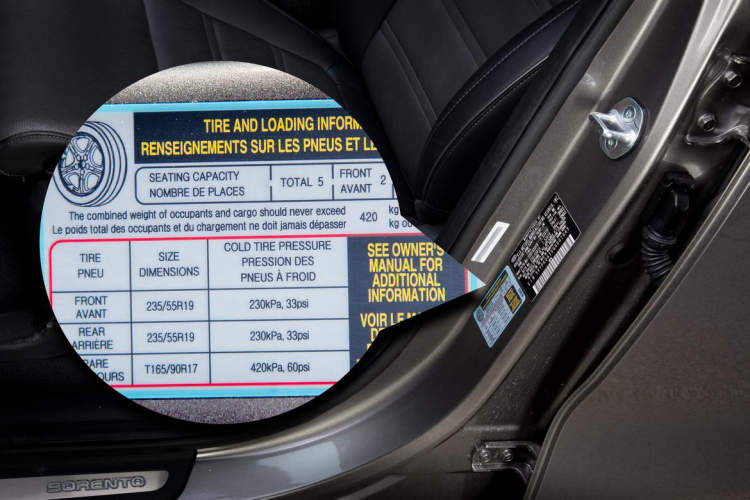Checking tire pressure regularly is an essential maintenance task for both cars and motorcycles. Maintaining the correct tire pressure is crucial for safety, fuel efficiency, and prolonging the lifespan of your tires. In this article, we will guide you on how to check tire pressure in cars and motorcycles, ensuring that you hit the road with confidence.
The first step in checking tire pressure is to gather the necessary tools – a tire pressure gauge and an air compressor. Once you locate the recommended tire pressure for your vehicle, typically found on a placard inside the driver’s door or in the owner’s manual, you can proceed to check and adjust the tire pressure accordingly. This straightforward process can help prevent accidents and costly maintenance issues, so let’s dive into the details of how to check tire pressure in cars and motorcycles.
Importance of Checking Tire Pressure
Proper tire pressure is vital for safe and efficient driving. Neglecting to regularly check and maintain the tire pressure can lead to various issues that can affect both cars and motorcycles. Here are a few reasons why it is crucial to keep an eye on tire pressure:
1. Safety
Driving with underinflated or overinflated tires can affect the vehicle’s handling and stability, increasing the risk of accidents. Properly inflated tires ensure optimal traction, braking distance, and maneuverability on the road.
2. Fuel Efficiency
When tire pressure is too low, it creates more rolling resistance, which means the engine has to work harder to move the vehicle. This results in increased fuel consumption and ultimately reduces the overall fuel efficiency of the vehicle.
3. Tire Lifespan
Inadequate tire pressure can cause uneven tire wear, leading to premature tire damage and reducing its overall lifespan. Regularly checking and maintaining the correct tire pressure can help extend the life of your tires and save you money in the long run.
4. Handling and Performance
Properly inflated tires provide better handling, responsiveness, and overall performance. Maintaining the recommended tire pressure ensures that your vehicle’s suspension and braking systems can work effectively, enhancing your driving experience.
5. Weather and Road Conditions
Tire pressure can fluctuate due to changes in temperature, which can lead to unsafe driving conditions. Cold weather causes tire pressure to decrease, while hot weather causes it to increase. Therefore, regular pressure checks are especially important during extreme temperature changes.
6. Tire Blowouts
Driving with tires that are significantly overinflated can lead to tire blowouts. Excess pressure puts excessive strain on the tire’s structure, making it more susceptible to failure, especially at high speeds. Regularly monitoring and adjusting tire pressure can prevent this dangerous situation.
Steps to Check Tire Pressure in Cars and Motorcycles

Regularly checking tire pressure is crucial to ensure the safety and performance of both cars and motorcycles. Here are the steps to check tire pressure:
- Prepare the necessary tools: a tire pressure gauge and an air compressor or an air pump.
- Park the vehicle on a level surface and turn off the engine.
- Locate the valve stem on each tire. It is usually a small rubber or metal cap located on the side of the tire.
- Remove the valve stem cap by unscrewing it.
- Press the tire pressure gauge firmly onto the valve stem. You will hear a small hissing sound as the gauge makes contact with the valve.
- Read the displayed pressure on the gauge. Compare it with the recommended tire pressure specified in the owner’s manual or on a sticker located inside the driver’s door jamb or fuel filler cap.
- If the tire pressure is lower than recommended, add air to the tire using an air compressor or pump. Attach the nozzle of the compressor or pump to the valve stem and inflate the tire until it reaches the recommended pressure.
- If the tire pressure is higher than recommended, release some air by pressing down on the valve stem gently. Recheck the pressure until it reaches the recommended level.
- After adjusting the tire pressure, place the valve stem cap back on and ensure it is properly tightened to prevent air leakage.
- Repeat the steps for all tires, including the spare tire if applicable.
Regularly checking and maintaining proper tire pressure not only improves fuel efficiency but also enhances traction, handling, and overall tire lifespan. Make it a habit to check tire pressure at least once a month or before embarking on long trips.
Conclusion
Regularly checking tire pressure is essential for both cars and motorcycles to ensure optimal performance and safety on the road. By following a few simple steps, you can easily check tire pressure and make necessary adjustments to maintain proper inflation.
Remember to use a reliable tire pressure gauge and refer to the manufacturer’s recommended pressure levels. Overinflated or underinflated tires can lead to poor fuel efficiency, decreased traction, and increased risk of accidents. Taking a few minutes to check tire pressure regularly can significantly extend the lifespan of your tires and improve overall driving experience.

0 Komentar untuk "How to Check Tire Pressure in Cars and Motorcycles?"